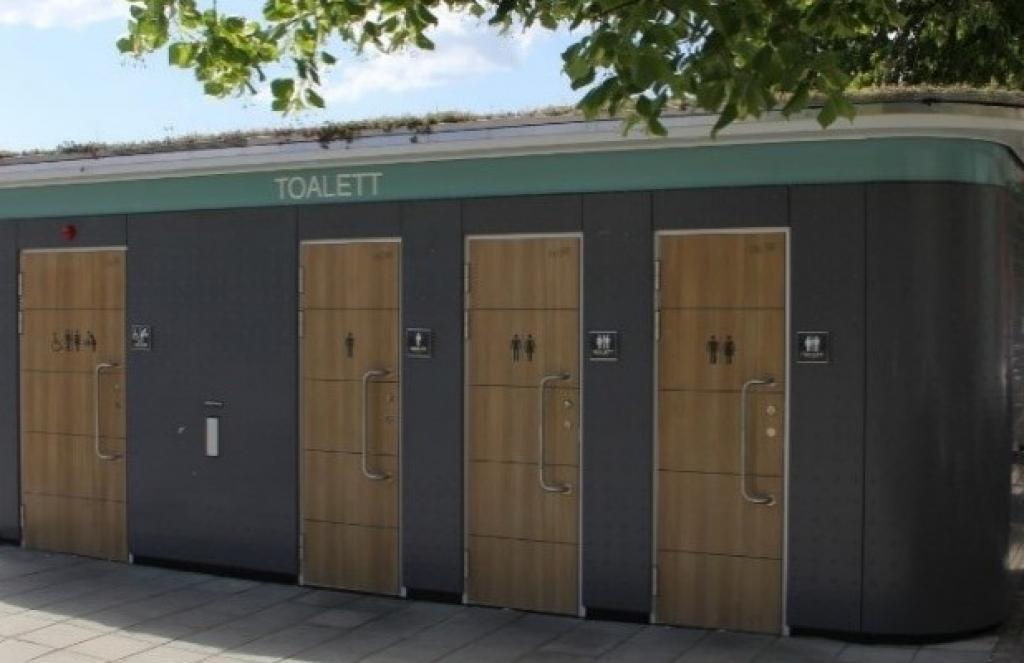Thessaloniki gets ready for its metro launch in November
The underground rapid transit lines have been under construction for almost two decades due to various project delays
 TheMayor.EU logo
TheMayor.EU logo 
Even the public toilets in Sweden feature Scandinavian design, Source: Swedish Park and Nature Administration
That’s probably one of the eternal dilemmas for urban societies
Starting this week, the City of Gothenburg began charging a fee in order to use all of the public toilet facilities on the territory of the municipality. The service used to be free, however, the reason for the fee is to increase accessibility and reduce the vandalism and illegal activities for which the toilets have started increasingly being used. Due to this, the facilities have often not been available to people who want to use them for what they are intended for.
The price for using the public toilet in the Swedish city will be set at SEK 5 (= 50 euro cents) and it will be payable by card. Instruction for how the payment is made will be available on the walls.
The work with the introduction of payment systems begins with the restrooms on Västra hamngatan and will end with those in Azaleadalen. The fee will be introduced on all the city's public toilet buildings. However, the city website reported that it will take one year to complete the process.
One year was also the testing phase of the idea. The fee of SEK 5 for toilet visits had been charged to Drottningtorget's and Hjalmar Brantingsplatsen's restrooms. The results showed increased availability, security and reduced vandalism. Which led to the toilets being able to be used for their real purpose.
What’s great is that people in a hurry will not have to rummage around in their pockets for loose change anymore, now that the payment method has been digitalized.
However, there will surely be others who will frown at the imposition of tax on such basic physical needs, as many consider the access to public toilets to be almost akin to a citizen’s right. The city authorities, however, explained that the restrooms have been occupied for long periods for, among other things, drug use, violent crime, prostitution and overnight stays. There was a lot of sanitary littering that often led to blockages in the pipes, as well as breakage and damage to the interior.

The underground rapid transit lines have been under construction for almost two decades due to various project delays

Now you can get your wine in Talence by paying directly in Bitcoin

That’s because the state has to spend money on updating the railway infrastructure rather than subsidizing the cost of the popular pass

Rethinking renewable energy sources for the urban landscape

The examples, compiled by Beyond Fossil Fuels, can inform and inspire communities and entrepreneurs that still feel trepidation at the prospect of energy transition

Now you can get your wine in Talence by paying directly in Bitcoin

The 10th European Conference on Sustainable Cities and Towns (ESCT) sets the stage for stronger cooperation between the EU, national and local level to fast track Europe's transition to climate neutrality.

At least, that’s the promise made by the mayor of Paris, Anne Hidalgo

The underground rapid transit lines have been under construction for almost two decades due to various project delays

At least, that’s the promise made by the mayor of Paris, Anne Hidalgo

Hostal de Pinós is located in the geographical centre of the autonomous region

Despite its church-y name, the district has long been known as the hangout spot for the artsy crowds

Urban dwellers across the EU are having a say in making their surroundings friendlier to people and the environment.

Forests in the EU can help green the European construction industry and bolster a continent-wide push for architectural improvements.

Apply by 10 November and do your part for the transformation of European public spaces

An interview with the Mayor of a Polish city that seeks to reinvent itself

An interview with the newly elected ICLEI President and Mayor of Malmö

A conversation with the Mayor of Lisbon about the spirit and dimensions of innovation present in the Portuguese capital














